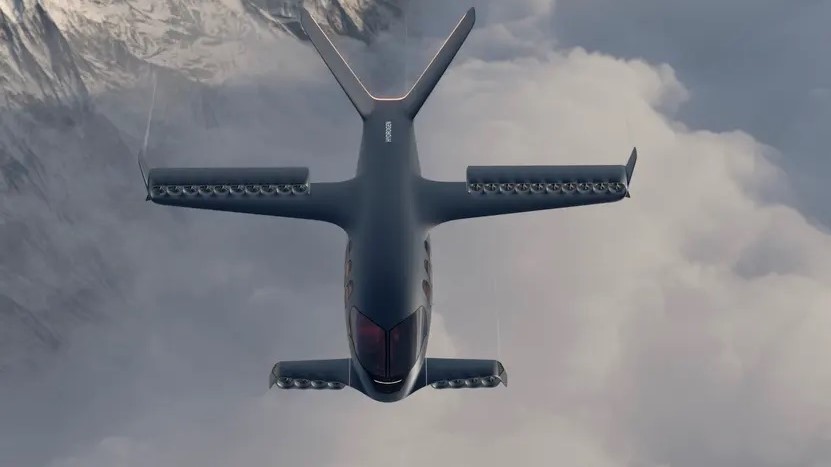The Sirius Jet will fly up to 1,150 miles (1,851 km) at speeds up to 323 mph (520 km/h) on a clean liquid-hydrogen powertrain. It’ll rise vertically off a pad thanks to a deflected vectored thrust system using 20 smallish electric ducted fans.
It’s the work of Swiss startup Sirius Aviation AG, which has apparently had a “team of 100+ engineers” beavering away at “intense R&D” on this project in the insanely picturesque lakeside town of Baar since 2021. Sirius says it’s already started the certification process with the FAA, with a demonstration plane scheduled for first flights in 2025. Full certification, commercial deliveries and shuttle flights are planned for 2028.
To access that maximum 1,150-mile range, you’ll need to go for the Business version, which can only take three passengers. A five-passenger, commercially-focused Millennium version displaces two seats’ worth of hydrogen tanks, reducing range to 650 miles (1,046 km) – but that’s still more than four times the 124-155-mile (200-250-km) range Lilium is targeting using batteries, and it pushes Sirius into contention for routes like LA to San Francisco, London to Berlin, Melbourne to Sydney, or Beijing to Seoul.
The minor one is its deflected-thrust, small-fan system, which looks like a recipe for throwing energy away. As we discussed with Lilium CTO Alistair McIntosh, small fans with high disc loading are vastly less efficient in VTOL and hover operations than the larger propellers and rotors used on most eVTOL air taxi designs. Sirius is planning to have 20 fans, each just 11.8 inches (30 cm) in diameter, along its wings and canards.
The liquid-hydrogen powertrain, on the other hand – that would be a bigger concern for us. There’s little doubt at this stage that hydrogen is the path that’ll get us to clean short-range and regional aviation, and there are a number of companies working to develop and certify aviation-grade hydrogen powertrains. But this alone is an enormous task – there are test planes flying on hydrogen as we speak, but it remains a cutting-edge technology that nobody’s got certified or into commercial use yet.
Tags: Aircraft, eVTOL, Liquid Hydrogen, Sirus Jet



Recent Posts
FIMI and Deloitte Release Report on Cleaner Vehicle Adoption in Indian Mining Sector
NTPC Deploys Hydrogen Fuel Cell Buses in Leh, Marks India’s First Commercial Hydrogen Mobility Project
Provaris and K LINE Sign MOU to Advance Hydrogen Shipping Solutions
Mumbai Set to Launch Electric Hydrofoil Ferry Network with Candela P-12 Vessels
AVTL to Build Independent Ammonia Terminal at Pipavav Port
DNV Grants Approval in Principle for New Ammonia Bunkering Vessel Design
Proteus Launches Modular Hydrogen Fuel Cell System for Maritime Sector
Van Oord Unveils Boreas, World’s Largest and Most Sustainable Offshore Wind Installation Vessel